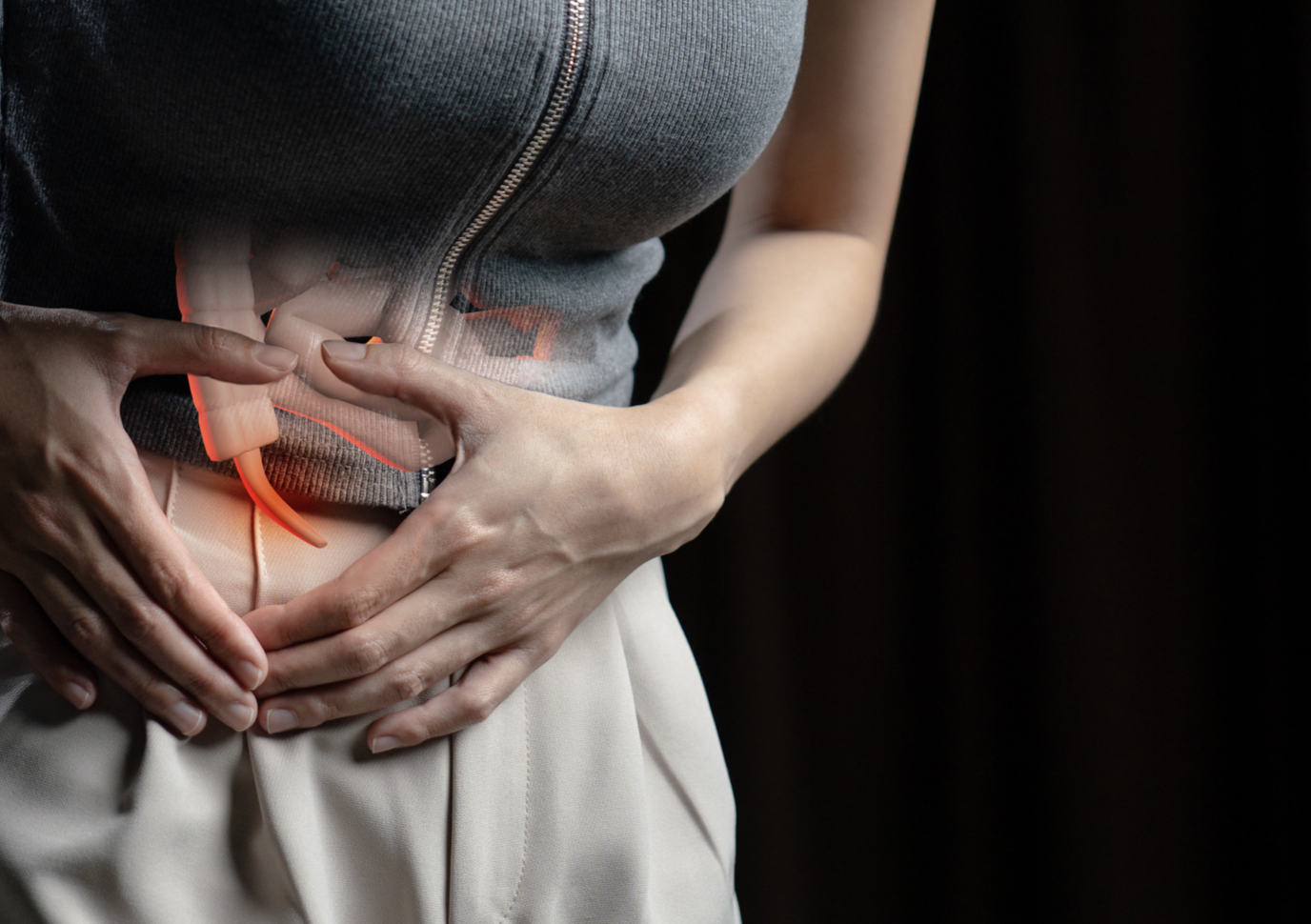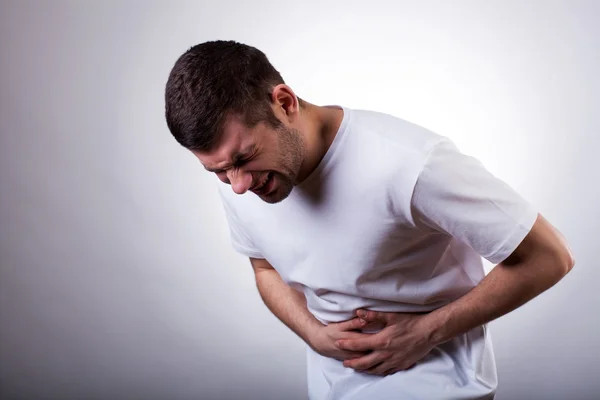Definisi
Apendisitis akut adalah kondisi kegawatdaruratan yang disebabkan oleh peradangan pada apendiks, atau yang biasa dikenal dengan usus buntu/umbai cacing. Apendiks berada di kuadran kanan bawah perut. Seseorang yang mengalami apendisitis akut umumnya mengalami nyeri pada perut kanan bawah. Namun, pada kebanyakan orang, rasa nyeri ini awalnya muncul pada daerah pusar, kemudian seiring peradangan yang semakin memburuk, nyeri berpindah ke perut kanan bawah. Nyeri yang dirasakan pada apendisitis akut biasanya akan semakin memberat dalam 24 jam. Apendisitis adalah salah satu penyebab nyeri perut akut yang paling sering ditemukan dan memerlukan tata laksana segera.
Apendisitis terjadi paling banyak pada usia 5–45 tahun. Insidens terjadinya apendisitis akut adalah 233 per 100.000 orang. Laki-laki lebih sering mengalami apendisitis akut dibandingkan perempuan. Di Amerika Serikat, sekitar 1 dari 20 orang akan mengalami apendisitis selama hidupnya.
Penyebab
Peradangan pada usus buntu atau apendiks dapat terjadi secara:
- Akut, yang terjadi cepat dan menunjukkan gejala
- Kronis, yang terjadi dalam jangka waktu lama dan menunjukkan gejala yang minimal
Apendisitis akut lebih sering terjadi dibandingkan apendisitis kronik dan membutuhkan penanganan segera. Penyebab dari apendisitis akut adalah adanya sumbatan pada apendiks. Sumbatan ini dapat disebabkan oleh banyak hal seperti infeksi, pembesaran limfa (hiperplasia limfoid), tinja yang keras (fekalit), hingga tumor pada apendiks.
Penyumbatan yang terjadi pada apendiks dapat menyebabkan peningkatan tekanan di dalam apendiks, sehingga mengganggu aliran darah dan aliran lendir yang dihasilkan di dalamnya. Karena tersumbat, apendiks akan terisi dengan lendir dan menjadi teregang, membuat apendiks menjadi tempat yang baik untuk tumbuhnya bakteri. Semua faktor ini menyebabkan apendiks mengalami peradangan akut hingga kematian jaringan (nekrosis). Kombinasi antara membesarnya apendiks dan infeksi bakteri menyebabkan gejala-gejala dari apendisitis akut.
Faktor Risiko
Faktor yang dapat meningkatkan risiko Anda mengalami apendisitis akut adalah:
- Usia. Apendisitis akut lebih sering terjadi pada usia 20 tahun
- Jenis kelamin. Apendisitis akut lebih sering terjadi pada laki-laki
- Riwayat keluarga. Riwayat keluarga dengan apendisitis akut dapat meningkatkan risiko mengalami apendisitis akut
Gejala
Gejala dari apendisitis akut, antara lain:
- Nyeri tiba-tiba pada perut kanan bawah
- Nyeri yang terasa pada pusar lalu berpindah ke perut kanan bawah
- Nyeri yang memberat ketika batuk, berjalan, atau bergerak tiba-tiba
- Mual dan muntah
- Hilang nafsu makan
- Demam yang bertambah berat seiring dengan bertambahnya gejala lain
- Sembelit atau diare
- Perut kembung
- Buang angin lebih sering
Lokasi nyeri dapat bervariasi tergantung pada usia dan posisi apendiks Anda. Jika mengalami penyakit ini saat hamil, nyeri dapat dirasakan pada perut kanan atas karena posisi apendiks yang lebih tinggi. Hal ini disebabkan karena posisi apendiks terdorong keatas karena adanya pembesaran rahim. Gejala-gejala di atas akan menjadi semakin berat selama 12–24 jam setelah gejala awal. Setelah 48 jam dari timbulnya gejala awal, dapat terjadi komplikasi berupa pecahnya apendiks (perforasi).
Diagnosis
Dokter Anda akan menanyakan mengenai keluhan utama Anda, kapan keluhan tersebut pertama kali muncul, dan gejala lain yang menyertai. Pemeriksaan fisik perlu dilakukan untuk memastikan diagnosis. Dokter melakukan pemeriksaan untuk melihat bila ada tanda khas yang muncul pada penderita apendisitis. Tanda-tanda tersebut diperhatikan saat melakukan pemeriksaan fisik di area perut. Pemeriksaan ginekologi dalam dan colok dubur juga dapat dilakukan untuk mengecualikan kemungkinan diagnosis banding akibat penyakit lain.
Selain pemeriksaan fisik, dokter juga dapat melakukan pemeriksaan tambahan untuk memastikan diagnosis, seperti:
- Tes darah untuk melihat adanya peningkatan jumlah sel darah putih yang menandakan peradangan
- Tes urin untuk melihat kemungkinan nyeri perut tidak disebabkan oleh radang pada apendiks, misalnya karena infeksi batu ginjal
- Pemeriksaan radiologis dengan menggunakan USG abdomen atau CT scan
- Pemeriksaan kehamilan. Kehamilan luar kandungan (ektopik) memiliki gejala yang mirip dengan apendisitis. Kondisi ini juga merupakan kondisi gawat darurat dengan penanganan yang berbeda
Tata Laksana
Apendisitis dapat ditangani dengan operasi pengangkatan usus buntu yang mengalami peradangan (apendektomi). Sebelum apendektomi, dokter Anda akan memberikan antibiotik untuk meredakan infeksi yang telah terjadi, obat anti nyeri, pemasangan infus untuk pemberian cairan melalui pembuluh darah, dan diet cair setelah operasi. Diet cair adalah konsumsi makanan yang cair dan jernih (air mineral, kaldu) agar makanan menjadi lebih mudah diserap oleh tubuh tanpa ada sisa di saluran cerna.
Apendektomi dapat dilakukan dengan sayatan berukuran 5-10 cm (laparotomi) atau menggunakan beberapa insisi kecil (laparoskopi). Selama operasi apendektomi laparoskopi, dokter bedah Anda akan memasukkan kamera dan alat operasi dengan tujuan mengangkat apendiks yang mengalami peradangan.
Secara umum, teknik laparoskopi dapat membantu Anda sembuh lebih cepat dan bekas luka yang lebih sedikit. Namun, laparoskopi tidak selalu dapat dilakukan. Jika apendiks telah pecah atau ruptur dan infeksi telah menyebar ke bagian lain, dokter bedah Anda perlu melakukan open appendectomy sehingga dapat membersihkan rongga perut (kavitas abdomen) Anda.
Perawatan Diri di Rumah
Lama penyembuhan akan bergantung pada komplikasi yang terjadi, pengobatan yang dikonsumsi dan kondisi kesehatan Anda secara keseluruhan seperti adanya penyakit penyerta lainnya, usia, dan lain-lain. Hal yang dapat membantu mempercepat penyembuhan antara lain:
- Hindari aktivitas yang berat. Jika operasi yang dilakukan adalah laparoskopi, batasi aktivitas Anda untuk 3–5 hari ke depan. Jika Anda melakukan operasi apendektomi laparotomi, batasi aktivitas Anda untuk 10–14 hari. Tanyakan kepada dokter mengenai batasan aktivitas yang dapat dilakukan dan kapan Anda dapat melakukan aktivitas seperti biasa setelah operasi
- Letakkan bantal di perut ketika batuk. Hal ini dapat membantu mengurangi tekanan ketika batuk, tertawa, atau bergerak sehingga nyeri yang dirasakan berkurang
- Bergerak ketika Anda sudah siap. Mulai sedikit demi sedikit jika Anda sudah merasa lebih baik
- Konsultasikan kepada dokter Anda jika obat nyeri tidak efektif. Nyeri dapat menambah stress pada tubuh Anda dan memperlambat proses penyembuhan. Konsultasikan pada dokter Anda jika obat anti nyeri yang konsumsi kurang efektif dalam meringankan nyeri yang Anda rasakan
- Kembali sekolah atau bekerja. Anda dapat kembali bekerja ketika Anda sudah merasa lebih baik. Anak dapat kembali sekolah dalam waktu 1 minggu pasca operasi, namun perlu menunggu 2–4 minggu untuk dapat melakukan aktivitas fisik contohnya kelas olahraga
- Jaga luka operasi Anda tetap kering dan bersih
Komplikasi
Apendisitis akut yang tidak ditangani dengan baik dapat menyebabkan komplikasi serius, antara lain:
- Ruptur apendiks
Ruptur apendiks merupakan kondisi pecahnya usus buntu yang dapat menyebabkan infeksi ke seluruh perut sehingga menyebabkan peritonitis. Kondisi ini dapat mengancam nyawa. Peritonitis membutuhkan operasi secara cepat untuk mengambil apendiks dan membersihkan rongga perut Anda.
- Abses apendiks
Jika usus buntu yang mengalami radang tidak pecah, usus buntu akan membentuk sebuah kantong berisi nanah hasil proses peradangan dan infeksi yang disebut abses. Pada sebagian besar kasus, dokter bedah Anda akan mengupayakan agar nanah dapat keluar dari kantung dengan memasang selang dari dinding perut (drainase abses). Selang tersebut akan dipertahankan selama dua minggu seiring dengan pemberian antibiotik. Setelah infeksi mereda, dokter bedah Anda akan mengangkat usus buntu tersebut.
Pencegahan
Tidak ada cara khusus untuk mencegah apendisitis. Namun, Anda dapat mengurangi risiko berkembangnya apendisitis dengan mengonsumsi makanan tinggi serat, seperti buah-buahan, sayuran, biji-bijian, oatmeal, beras coklat, dan kacang-kacangan. Jika Anda memiliki masalah konstipasi, dokter Anda akan memberikan suplementasi serat.
Kapan Harus ke Dokter?
Jika Anda mengalami gejala-gejala di atas, segera periksakan diri ke fasilitas kesehatan. Kondisi apendisitis akut memerlukan penanganan yang tepat dan cepat agar tidak menyebabkan komplikasi yang lebih berat.
Mau tahu informasi seputar penyakit lainnya? Cek di sini, ya!
- dr Ayu Munawaroh, MKK
- dr Hanifa Rahma
Jones MW, Lopez RA, Deppen JG. Appendicitis. [Updated 2021 Sep 9]. In: StatPearls [Internet]. Treasure Island (FL): StatPearls Publishing; 2021 Jan-. Available from: https://www.ncbi.nlm.nih.gov/books/NBK493193/
Mayo Clinic Staff. (2021). Appendicitis. MayoClinic. Available at: https://www.mayoclinic.org/diseases-conditions/appendicitis/symptoms-causes/syc-20369543
Synder MJ, Guthrie M. Acute appendicitis: efficient diagnosis and management. American Family Physician. 2018 Jul 1;98(1):25-33. Available at: https://www.aafp.org/afp/2018/0701/p25.html
Young C. (2021). Everything you need to know about appendicitis. Healthline. Available at: https://www.healthline.com/health/appendicitis
Begum J. (2021). Appendicitis. WebMD. Available at: https://www.webmd.com/digestive-disorders/digestive-diseases-appendicitis












